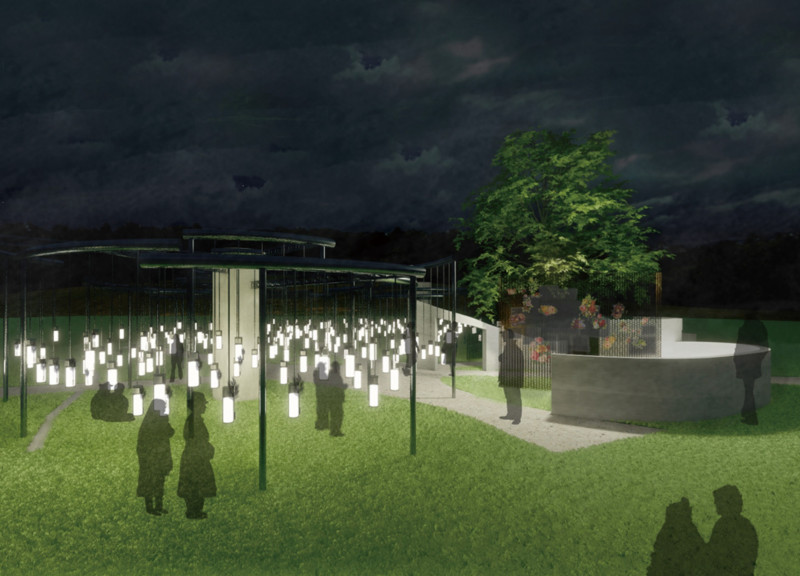5 key facts about this project
The architectural project "Free from Borders: Columbarium" proposes a modern interpretation of spaces dedicated to remembrance. This design challenges traditional perceptions of cemeteries and charnel houses, emphasizing openness and community engagement. It provides a fresh perspective on memorialization by creating an inviting environment where visitors can interact with both the physical space and their emotions.
The central idea behind this project is to redefine how society approaches death and memorial practices. By moving away from the somber, restrictive layouts typically associated with traditional burial sites, this columbarium fosters a sense of freedom and connection. It is designed to accommodate both individual moments of reflection and communal gatherings, allowing families to bond over shared experiences of loss while celebrating the lives of those who have passed.
Spatial Organization and Flow
The layout of the columbarium is carefully considered to enhance the user experience. Circular forms dominate the structure, creating a sense of continuity and flow. Visitors can navigate the site through a series of connected paths, allowing them to move freely between personal niches and communal areas. This design encourages exploration and engagement with the surroundings, transforming what may usually be a solitary experience into one that embraces interaction.
Key design features include hanging niches that provide a unique way to house cremated remains. This design choice fosters an atmosphere of lightness and openness, contrasting with the conventional buried arrangements found in traditional cemeteries. Additionally, a central gathering space acts as a communal hub, further inviting visitors to share memories and connect with others.
Material Choices and Environmental Integration
Materiality plays a crucial role in the project's overall aesthetic and function. Key materials include concrete, glass, steel, natural stone, and wire mesh. Concrete is primarily used for structural elements, ensuring durability while offering a contemporary appearance. Glass elements in the hanging niches enhance transparency, creating a feeling of ethereality. Steel provides a lightweight framework, while natural stone pathways promote a connection to the surrounding landscape. The incorporation of wire mesh offers a decorative aspect, allowing families to personalize the space with mementos.
The design harmonizes with the environment, integrating existing trees and greenery into the layout. This connection to nature not only enhances the visual appeal but also contributes to a calming atmosphere, which assists in the grieving process. The thoughtful arrangement of spaces, combined with an understanding of materiality, results in an architectural solution that resonates with modern attitudes toward memorialization.
This project represents a shift in how architecture can redefine spaces associated with mourning and remembrance. Its unique design approach, spatial organization, and material selections distinguish it from conventional memorial sites. To appreciate the full depth of this project, exploring the architectural plans, sections, and detailed design elements can provide valuable insights into the innovative ideas that inform this thoughtful approach to architecture.






















































